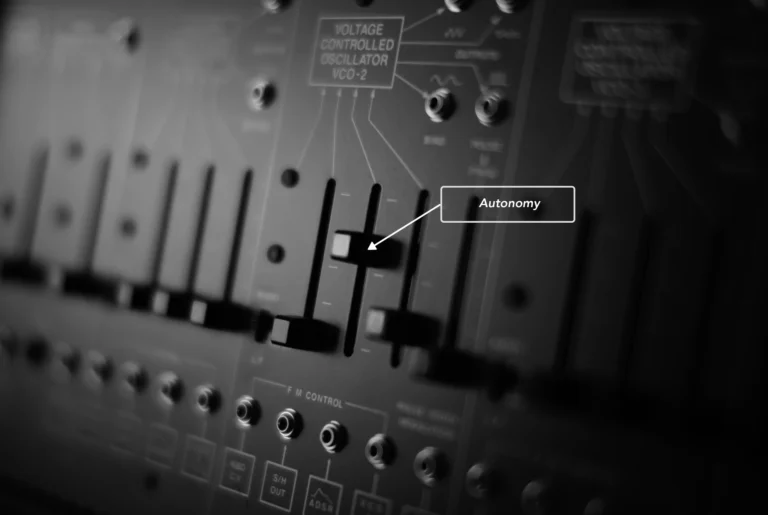An excerpt from “What Is Robotics As A Service?”, a practical guide to starting, launching, and scaling a robotics company.
Raising money for any new venture can be a long, arduous process, especially when the founders or executive team lack entrepreneurs or leaders with prior successes and exits under their belt. Winning over investors for a RaaS play comes with additional challenges.
Creating a realistic business model
Before knocking on anyone’s door, RaaS companies seeking funding must refine their business plan so it includes all of the very real costs of doing business. Robots are expensive, require maintenance, upgrades, and the staff to perform those duties.
Plus those robots won’t run forever, so end-of-life for the machines and their replacement costs must factor into the equation. Other factors include operations and support personnel, maintenance costs, setup, and deployment costs.
At the end of the day, these robots are competing with staffing people to perform those same tasks. If the price point for the customer isn’t competitive, then the model is broken from the start.
However, most RaaS founders and investors understand that generating revenues and profits from Day One isn’t the goal, but rather achieving those things when the operation is running at scale. Figuring out how to shrink unit costs with more efficient processes, remote management, and the expected decline of robotic component costs, while still laying out a roadmap for reaching a breakeven point and eventual profitability is a challenging journey.
Larger rounds and longer paybacks
First, unlike many hot “as-a-service” markets, RaaS companies aren’t just looking for cash to beef up a software development team or spring for flashy marketing campaigns. RaaS businesses also need funds for hardware, whether they’re building the robots from scratch themselves or combining off-the-shelf components for their field deployments.
This capital-intensive hardware need may be foreign to many tech investors who have previously limited their bets to purely digital plays. While some may be willing to dip their toes into the physical world of product development thanks to the allure of robotic automation, founders should be sure to target investors with an appetite and realistic understanding of what it takes to bring a hardware-based solution to market at scale.
Another hurdle for fundraising RaaS companies is the lengthier timeline for RaaS deployments to turn a profit. Because RaaS businesses are paid monthly, quarterly, or annually for their solutions, it can take months or years until an individual customer engagement goes into the black since the initial revenue is covering the upfront hardware costs of each robot.
Relatedly, initial RaaS robot deployments may also not have as long of a working life as learnings and iteration over time should yield more cost-efficient robots with longer working lives, rendering earlier generations obsolete. Patience is most certainly a virtue in this space.
Finally, since it’s still the early days for robotic automation, not every investor may be up for the “Wild West” atmosphere of the industry where lots of RaaS outfits are attempting land grabs with competing solutions. There’s no established playbook for long-term RaaS success, and the lack of benchmarks and comparables may scare off potential backers that aren’t completely sold on the market opportunity and potential.
When to raise what
Bullish founders embracing their grand vision might wish their nascent RaaS startup was already poised to be the next “unicorn,” but most investors have specific thresholds in mind for each round of fundraising.
Patrick Hermann, an investor for Picus Capital whose robotics portfolio includes amongst others Formant as well as Coboworx, says each round comes with its own expectations. Hermann also recommends especially first time founders bringing in noteworthy angel investors from the robotics and tech world to validate the team and build credibility for the pre-seed/seed round.
For pre-seed investments, Hermann says “you need a strong idea and a first technical MVP (which can be hacked together) just to show there’s a path for a very specific solution which already can bring quick time to value. You also need a founding team with technical expertise, including someone with a Ph.D., post-doc or any other academic relevant background. Most importantly, you need a big vision, although you don’t need product-market fit yet.”
When eventually approaching venture capitalists, RaaS firms should be sure they understand the vision for the business and the connection between where the company is starting from and its ideal endpoint. “You need long-term investors looking for true partnerships,” Hermann added.
At the seed stage, Hermann says they look for product-market fit versus a specific revenue target. He’s also expecting the business to have one-to-three successful pilots that are on track to convert to generating RaaS revenue. The team should also have proofed its ability to hire stellar talent with the first one or two good hires and should have a plan to hire someone on the commercial side.
For a firm seeking Series A funding, $30,000-100,000 in monthly recurring revenue (MRR) is expected, along with the first significant addition to the base product. Beyond that, Hermann says “it’s all about scaling, volume, and organization buildout.”
Finding potential investors
Given the capital-intensive nature of spinning up and growing a RaaS business, potential investors must fit certain profiles, although more and more generalist funds are now seeing the potential for robotic automation and dipping their toes into the space. However, entering into the RaaS domain may be new territory for traditional tech investors.
“Salesforce.com doesn’t fall over when it hits a rock,” Said Jeff Linnell, founder and CEO of Formant. RaaS players will need to educate investors along the way regarding the unique aspects of RaaS compared to pure digital plays.
For most RaaS businesses still in their early stages, Hermann recommends following in the footsteps of other robotics pioneers.
“Map out the investor market based on who else has invested in similar robotics/tech companies at that stage,” he said, recommending TechCrunch, Crunchbase and personal networks to research this topic.
“Understand the goal, why I’m taking money, who’s the partner, and what do I need from this partner” Hermann continued. “Create a first wishlist, get warm introductions, and be bold. Ask other founders that you don’t compete with directly for their guidance.”
Hermann also recommends that RaaS companies don’t put all their eggs in one basket when soliciting investments by reaching out to multiple potential investors simultaneously to create a sense of competition and urgency in their fundraising efforts.
Winning them over
Investors hear tons of pitches from founders and CEOs all convinced they’ve got the golden ticket and secret sauce to unlock the market and reach great heights with their ideas and businesses. To break through the noise and secure a financing offer, RaaS companies need to demonstrate a few key things about their business and the market opportunity.
“Many founders are great at talking tech, but only a few of them leave the room/chat with an investor with clearly stating why their venture it’s a massive opportunity for the investor & themselves,” Hermann said. “All investors follow their theses on markets and a founder should know them and pitch in a way that convinces the investor on why their company fits into that vision.”
One winning ingredient is pitching more than just the hardware. RaaS businesses should see margins at scale more comparable with SaaS businesses than pure hardware plays, making them more attractive to investors looking to get in on the automation and robotics wave without adding a major outlier to their portfolio.
While most RaaS businesses seek funding for immediate growth, expansion, and additional research and development, investors are thinking about other things. What they’re really seeking from RaaS businesses is achieving predictable, stable cash flow sooner rather than later.
It’s also critical to delineate between hardware manufacturers, software businesses, and the services model. For hardware opportunities, Hermann says they will benchmark the technology against other competition in the market, only investing if it passes that comparison. He also advises against any hardware offering that doesn’t include at least some software offering, as hardware itself is rapidly commoditizing and margins will shrink as uptake ushers in more competition.
On the software side of the house, they’re looking for a really strong offering with a large enough market opportunity. Too often, Hermann says, the value proposition for software alone is slim, and there are far fewer barriers to entry.
For RaaS opportunities, investors want founding teams to be thinking big from the beginning. Hermann is looking for companies with solid plans for building out or buying the infrastructure to scale, a strong core team, and an understanding of growth channels for the business. These solutions also require infrastructure, logistics, operations, and support, so if a business isn’t doing that already, they need a solid plan for which components they’re buying from others or how to utilize partners.
In particular, a growing number of prospects being funneled through a primarily online sales process is a positive indicator for slightly more mature businesses, as well as a commitment to and strategy for educating the market during these early stages of adoption.
Alternatives to traditional funding sources
Raising money from angel investors, private equity firms, and venture capitalists is the “typical” funding route that many startups pursue. However, those aren’t the only ways to secure the cash a young RaaS firm needs to build out its MVP, hire additional talent, and land a few pilot customers.
Because robotic automation has such massive potential and ancillary benefits, there are lots of research and grant dollars also available to RaaS firms looking to fund their businesses. George Leno Holmes Jr, PhD, co-founder of the RaaS startup Hire Henry is developing industrial robotic mowers for commercial organizations, has taken his company from crazy idea to pilot phase without any venture or institutional dollars.
Instead of giving up equity, Holmes’s team has entered pitch competitions, accelerators, and secured grant dollars to fund operations to date. That includes a grant from the National Science Foundation I-Corps Program for studying the commercial lawn care industry with a focus on redesigning the job of mowing the grass for Gen Z and Generation Alpha workers. With these funds, Hire Henry has launched several pilots, deploying their mowers at the City of Sugar Land, Texas Regional Airport and the City of Northwoods, Missouri City Park providing their fully electric mowers to reduce greenhouse gas emissions and fill labor gaps.
Customers may also find ways to pay for their RaaS deployments using similar government funds. Additionally, there may be regulatory and legislative pressure creating urgency for a RaaS solution, such as California banning the sale of gas-powered lawn mowers by 2024. It’s wise to keep tabs on how local regulations and laws make a particular market segment even more open to RaaS.
Looking for funding? Check out a list of the top 10 VC’s investing in robotics.
Download your copy to read the full guide for free, here.



